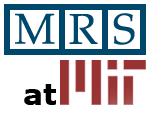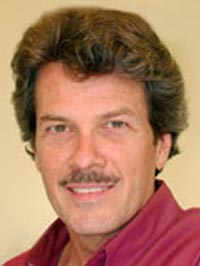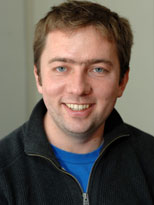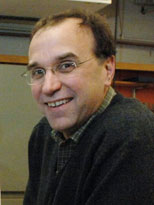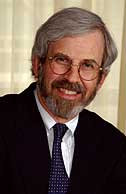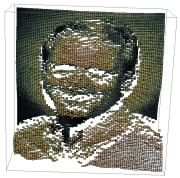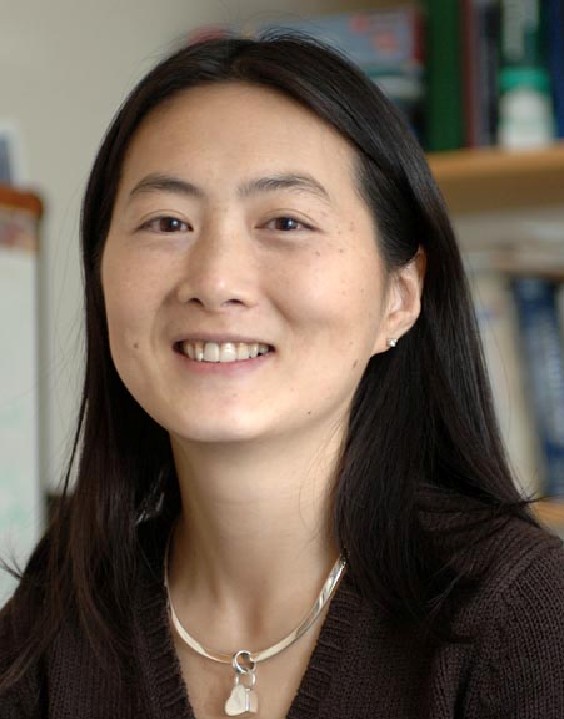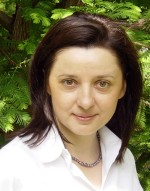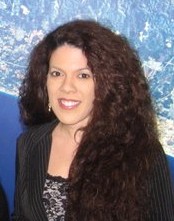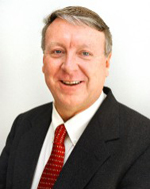|
::Lunch N Lecture Seminar Series Archives::
This archive page contains the information about previous Lunch N Lecture seminars.
The Fall 2009 Seminar Series:
| |
Polymer Multilayer Thin Films:
Building Function and Properties One Molecular Layer at a Time
|
Speaker: Prof. Michael F. Rubner
Professor of Materials Science and Engineering & Nuclear Engineering
Date: Tuesday, September 29th, 2009
Time: 12:00pm-1:00pm (pizza and refreshments will be served at 11:40am )
Location: The Chipman Room (6-104) |
A wide range of materials including charged polymers and nanoparticles can be sequentially assembled onto surfaces from aqueous solutions to form conformal thin film coatings with properties that are tunable at the nanoscale. These multilayer thin film coatings can be constructed from polymers, polymer-nanoparticle combinations and all nanoparticle assemblies. By controlling simple processing conditions such as solution pH and ionic strength, thin films with dramatically different properties can be constructed from the same materials. Nanoparticle assemblies designed to contain spatially periodic nanoporous regions can be used to create broadband anti-reflection coatings, highly reflective structural color coatings and templates for capillary condensation of functional molecules. The mechanical robustness of these coatings can be significantly enhanced by chemical and/or hydrothermal treatments that either introduce chemical crosslinks or partially fuse the nanoparticles together. Nanoscale control over film thickness and architecture has enabled the development of a variety of multi-functional coatings exhibiting anti-reflection, anti-fogging and self-cleaning capabilities. In the biomaterials area, such control has resulted in anti-bacterial properties and stimuli-responsive coatings that can be used to attach functional, drug carrying “backpacks” to living cells. Examples of these varied functional coatings will be described as well as the science and engineering underlying their unique capabilities.
|
|
|
| |
Tailoring Nanocomposite Properties by Atomic-scale Design of Interfaces
|
Speaker: Prof. Michael J. Demkowicz
John C. Chipman Assistant Professor of Materials Science and Engineering
Date: Thursday, October 22nd, 2009
Time: 12:00pm-1:00pm (pizza and refreshments will be served at 11:40am )
Location: The Chipman Room (6-104) |
As the characteristic microstructural dimensions of a composite material decrease, its interface area-to-total volume ratio increases. In nanocomposites, interfaces make up such a large fraction of the total material that they may dominate its thermal, mechanical, and diffusion behavior. Understanding the atomic-level structure and properties of interfaces is therefore essential to explaining and controlling the macroscale behaviors of nanocomposites. This talk will present how atomistic simulations can shed light on the role of interfaces in the radiation response of Cu-Nb multilayer nanocomposites as well as how this insight can be used to design new radiation-resistant materials.
|
|
|
| |
Convergence of Medical Products
|
Speaker: Prof. Michael J. Cima
Sumitomo Electric Industries Professor of Engineering
Date: Monday, November 2nd, 2009
Time: 12:00pm-1:00pm (pizza and refreshments will be served at 11:40am )
Location: The Chipman Room (6-104) |
This talk will give some examples of hybrid device-drug-diagnostic
products. My aim is to convince you that the most important aspect of
convergence is not among devices, drugs, and diagnostic tools. Rather, it
is the convergence of these products with medical procedures. Medical
procedures add significantly to the cost of medical care. Enabling new,
more effective, and safer medical procedures will require more technology,
not less.
|
|
|
The Spring 2009 Seminar Series:
| |
(Less-than-Random) Topological Explorations of the Amorphous Landscape: Disorder Connstrain’d or Glass Explain’d
|
Speaker: Linn Hobbs
Professor of Materials Science and Engineering & Nuclear Engineering
Date: Thursday, April 9th, 2009
Time: 12:00pm-1:00pm (pizza and refreshments will be served at 11:40am )
Location: The Chipman Room (6-104) |
Solids with less than crystalline order present a challenge to structural characterization, both experimentally and in modeling, because the vast simplifications of crystalline symmetries and translational replication are not available. Their atomic arrangements are not, however, likely to deviate radically from crystalline arrangements at local and intermediate range, based on chemical and energetic considerations, nor is it necessary to invoke crystallographic symmetries or translational periodicity to distinguish even crystalline arrangements or their structural options. My group has pioneered an alternative topological approach in which intermediate-range connectivity is characterized using Marians-Hobbs local cluster analysis[1] in which local primitive ring content is used to define a structural entity based on topology and not symmetry. A subset of the full local cluster connectivity can be used to distinguish locally between crystalline and amorphous regions in amorphizing solids and between different amorphous arrangements. Altered connectivity around point defects can be used to distinguish individual defects in highly-defective solids where a reference crystal overlay has been lost. Application of these topological methods to three less-than-crystalline structural assemblies, modeled using molecular dynamics simulations, will be illustrated in three simple systems: 1) compact forms of crystalline and amorphous silica; 2) amorphization of SiC in a reversible glass transition induced by chemical disorder; and 3) pressure-induced polyamorphic phase transformations in GeO2 glasses.
[1] Linn W. Hobbs, “Topological approaches to the structure of crystalline and amorphous atom assemblies,” in Engineering of Crystalline Materials Properties, ed. J. J. Novoa (Springer, Berlin, 2007) pp. 193-230.
|
|
|
| |
Kinetics of Micelle Formation Below the Critical Micelle Concentration
|
Speaker: Craig Carter
Lord Foundation Professor of Materials Science and Engineering
Date: Tuesday, February 24th, 2009
Time: 12:00pm-1:00pm (pizza and refreshments will be served at 11:40am )
Location: The Chipman Room (6-104) |
At amphiphilic surfactant concentrations above the critical micelle concentration (CMC), the stable micelle morphology has been predicted and is observed as a function of concentration and intrinsic micelle curvature. The kinetics of evolution from micelle nucleation to the stable morphology is much more complicated.
A phase field method to simulate morphological transitions of interfaces in soft materials such as surfactant self-assembled structures is developed and simulations are presented. The model captures both self-assembly of micelles and the effect of interface-curvature elastic-energy on their morphologies. Simulations of single micelle growth in dilute solutions reveal several previously unknown morphological transitions, including a disk-to-cylinder transition and a tip-splitting instability of cylindrical micelles. We propose that these morphological instabilities provide for the branched micelle structures, which have been observed and have significant effects on the rheological properties of solutions. (This work has been done in collaboration with Ming Tang, LLNL)
|
|
|
The Fall 2008 Seminar Series:
| |
Materials for Electrochemical Energy Conversion and Storage
|
Speaker: Yang Shao-Horn
Associate Professor, MIT Department of Mechanical Engineering/DMSE
Date: Wednesday, December 10th, 2008
Time: 12:00pm-1:00pm (pizza and refreshments will be served at 11:40am )
Location: The Chipman Room (6-104) |
The supply of clean and sustainable energy is one of the most important scientific challenges in the 21st century. Most clean and sustainable options such as solar energy, produce electricity, which requires storage in order to link energy supply with energy demand. Our research concerns the science and engineering of electrochemical energy conversion and storage. However, the energy densities of electrochemical energy technologies such as fuel cells and lithium batteries are low and their costs are high for transportation and stationary applications in comparison to combustion-based technologies. Fundamental research on the materials and catalysts that convert and store energy is needed to increase the performance and cost characteristics of electrochemical devices. We tackle these challenges from a fundamental perspective through the following framework: understanding the bulk and surface atomic and electronic structures of materials, uncovering reaction mechanisms, and application of mechanistic understanding to design new materials. In this talk, we will discuss 1) how surface atomic structures and near-surface chemical compositions of nanoparticles affect the catalytic activity for oxygen reduction and methanol oxidation in fuel cells, and 2) how nanostructured materials can promote the energy and power for lithium storage.
|
|
|
| |
Semiconductor nanowires: growth, properties, and applications
|
Speaker: Silvija Gradecak
Merton C. Flemings Assistant Professor of Materials Science and Engineering
Date: Wednesday, November 5th, 2008
Time: 12:00pm-1:00pm (pizza and refreshments will be served at 11:40am )
Location: The Chipman Room (6-104) |
Nanotechnology offers great promises for future applications. It explores unique and size-tunable properties of materials with dimensions that are comparable to the relevant physical correlation lengths. New materials not only offer solutions to some of the current challenges in science and engineering, but also lead to understanding of the physical world and to discoveries of new phenomena. In this talk I will discuss growth and doping of semiconductor nanowires and their applications in nanophotonics and electronic. Examples will include nanowire lasers with low lasing threshold, wavelength-tunable single nanowire LEDs, high-electron mobility transistors, and thermoelectric devices. I will also discuss new growth and characterization tools recently developed at MIT that allow direct structure-property correlation on the nanoscale.
|
|
|
| |
Nanotechnological Studies of Native and Regenerated Musculoskeletal Tissues
|
Speaker: Christine Ortiz
Associate Professor of Materials Science and Engineering
Date: Friday, September 26, 2008
Time: 12:00pm-1:00pm (pizza and refreshments will be served at 11:40am )
Location: The Chipman Room (6-104) |
Biological materials, such as musculoskeletal tissues, have developed amazingly complex, hierarchical, heterogeneous nanostructures over millions of years of evolution in order to function properly under the mechanical loads they experience in their environment. In this talk, I will describe studies of these fascinating materials using "nanomechanics"; i.e. the measurement and prediction of extremely small forces within and between nanoscale constituents in order to provide a fundamental molecular-level understanding of the mechanical function, quality, and pathology of structural biological materials. Examples of materials under investigation to be discussed include; cartilage and bone. A quad-tiered approach is taken in order to achieve this goal which includes; nanomechanics of single cells and their pericellular matrix, individual extracellular matrix molecule imaging, biomimetic model systems, and tissue-level properties. Nanotechnological methods applied to the field of musculoskeletal tissues and regenerative medicine (e.g. stem-cell based tissue engineering) hold great promise for significant and rapid advancements towards tissue repair and/or replacement and improved treatments for people afflicted with diseases such as osteoarthritis.
|
|
|
The Spring 2008 Seminar Series:
| |
Blind and Deaf : Having Fun with Periodic Polymers
|
Speaker: Edwin (Ned) Thomas
Morris Cohen Professor
Materials Science and Engineering Department Head
Date: Wednesday, April 16, 2008
Time: 12:00pm-1:00pm (pizza and refreshments will be served at 11:40am )
Location: The Chipman Room (6-104) |
Nanotechnology requires control of materials from the atomic to the 100 nanometer to the macroscopic level. Exploiting the size and shape dependence of material properties and accessing multi-functionality holds great promise for the development of materials that will contribute to novel future technologies. Polymers are a class of materials that have a very broad range of properties and moreover, can act as hosts for metallic and dielectric nanoparticles as well as organic molecules, resulting in nanocomposites with combinations of properties not available by other means. Periodic structural assemblies are of particular interest, due to their interesting interactions with waves: especially electromagnetic and mechanical waves. Progress in this exciting area requires excellent control of structure formation. A top-down, bottom-up approach, involving interference lithography and self assembly is demonstrating good success in fabricating the requisite structures and desired properties for photonics and phononics.
|
|
|
| |
Beyond Genomics: The Materials Science of Proteins
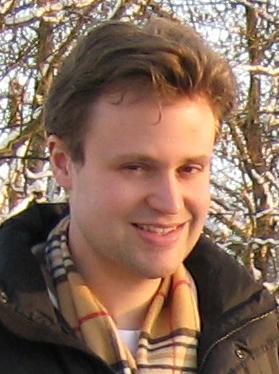 |
Speaker: Markus Buehler
Professor of Civil and Environmental Engineering
Department of Materials Science and Engineering Lecturer
Date: Thursday, March 20, 2008
Time: 12:00pm-1:00pm (pizza and refreshments will be served at 11:40am )
Location: The Chipman Room (6-104) |
After identifying the entire genetic code of several species, it is now apparent that the ultimate frontier in the life sciences lies beyond identifying the sequence of DNA. The next grand challenge is the understanding of the multi-scale behavior of hierarchical protein assemblies, that is, the elucidation of the interface between structure and material. The advancement of this field is crucial for studies of biological systems, disease diagnosis and treatment, as well as the design of novel materials. Proteins constitute critical building blocks of life, forming materials such as hair, bone, skin, spider silk or cells, which play a key role in providing important mechanical functions in biology. The fundamental deformation and fracture mechanisms of biological protein materials, however, remain largely unknown, partly due to a lack of understanding of how protein building blocks respond to mechanical load and how they participate in the deformation and function of the overall biological system. The mechanics of protein materials is vital for models of diseases, the understanding of tissue injuries, for models of biological processes such as mechanotransduction, and the development of biomimetic and bioinspired materials. In this talk we review atomistic molecular dynamics simulations implemented on supercomputing facilities, combined with continuum mechanical and statistical theories, used to develop predictive models of the deformation and fracture behavior of protein materials. This approach explicitly considers the hierarchical architecture of proteins, including the details of their chemical bonding, capable of predicting their unfolding behavior and thereby providing a structure-property relationship. We review the development of a fracture theory and strength model for beta-sheets and alpha-helices, two prominent protein motifs that form the basis of many protein materials, including spider silk and intermediate filaments. Our studies elucidate intriguing material concepts that facilitate to balance strength, dissipation and robustness via nanopatterned hierarchical features. Our results suggest universal scaling laws that govern the mechanical response of protein structures. We discuss these observations in light of a newly proposed universality-diversity paradigm, which is based on the idea that the key to understand the properties of protein materials is to consider the interplay of universal structural features and a set of highly diverse features. It is found that this viewpoint can be applied to numerous classes of protein materials, thereby providing a fundamental perspective to explain the evolutionary footprint of structural protein materials. We discuss the implications of our work for materials science, biology, the science of multi-scale interactions, and how this knowledge can be exploited to develop new bioinspired materials and structures.
|
|
|
The Fall 2007 Seminar Series:
| |
Self-Assembly, Nanomagnets and Magnetic Devices
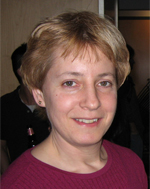 |
Speaker: Caroline Ross
Professor of Materials Science and Engineering
Date: Monday, October 22, 2007
Time: 12:00pm-1:00pm (pizza and refreshments will be served at 11:40am )
Location: The Chipman Room (6-104) |
Nanoscale magnetic materials are the basis of magnetic data storage devices such as hard drives and magnetic random access memories. As these devices evolve, there is an increasing need to understand nanoscale magnetic properties of materials, and develop ways to fabricate them. In this talk I will describe methods based on self-assembly of block copolymers, as well as more conventional lithography methods, to fabricate arrays of nanomagnets, and show how these materials may be used in future data storage devices.
|
|
|
The Spring 2007 Seminar Series:
| |
Innovation in IC's: New Materials, New IC's?
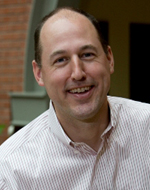 |
Speaker: Eugene Fitzgerald
Merton C. Flemings-SMA Chair Professor of Materials Engineering
Date: Tuesday, May 15, 2007
Time: 12:00pm-1:00pm (pizza and refreshments will be served at 11:40am )
Location: The Chipman Room (35-410) |
Strained silicon has had a significant role in extending Moore’s Law, which is the increase of transistor density in silicon integrated circuits as time passes. New materials have recently played an increasingly important role in one of the most important sectors for the economy (information technology). But will new materials advances allow us to continue on previous industry trajectories? If not, is there new opportunity? And finally, how will innovations in materials find their way in the current industry structure to deliver the most value in the marketplace?
|
|
|
| |
The Convergence of Electronics and Photonics:
Materials Science Moves Up the Food Chain
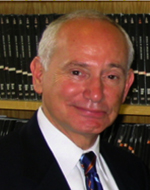 |
Speaker: Lionel C. Kimerling
Thomas Lord Professor in Materials Science and Engineering
Director of the MIT Materials Processing
Center
Director of the MIT Microphotonics Center
Date: Tuesday, May 1, 2007
Time: 12:00pm-1:00pm (pizza and refreshments will be served at 11:30am )
Location: The Chipman Room (35-410) |
The optical components industry stands at the threshold of a major expansion that will restructure its business processes and sustain its profitability for the next three decades. This growth will establish a cost effective platform for the partitioning of electronic and photonic functionality to extend the processing power of integrated circuits and the performance of optical communications networks. The traditional dimensional shrink approach to the scaling of microprocessor technology is encountering barriers in materials and power efficiency that dictate more distributed architectures. This direction will ignite a major change in leadership of the industry from information transmission (telecom) to information processing (computing, imaging); and it will open significant new markets with high volume applications. The talk will present an overview of the challenges and the roles of materials and process design in fomenting the revolution.
|
|
|
|
